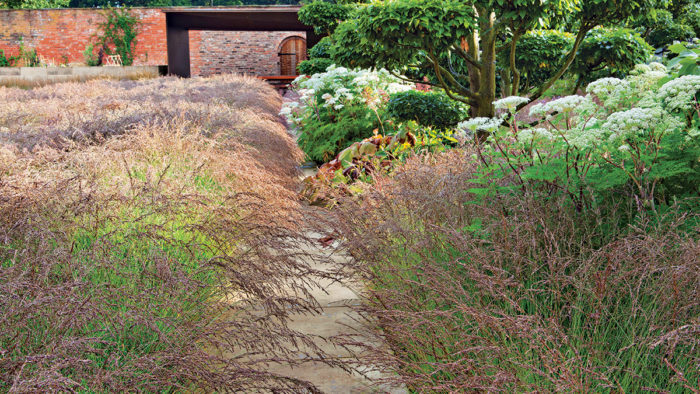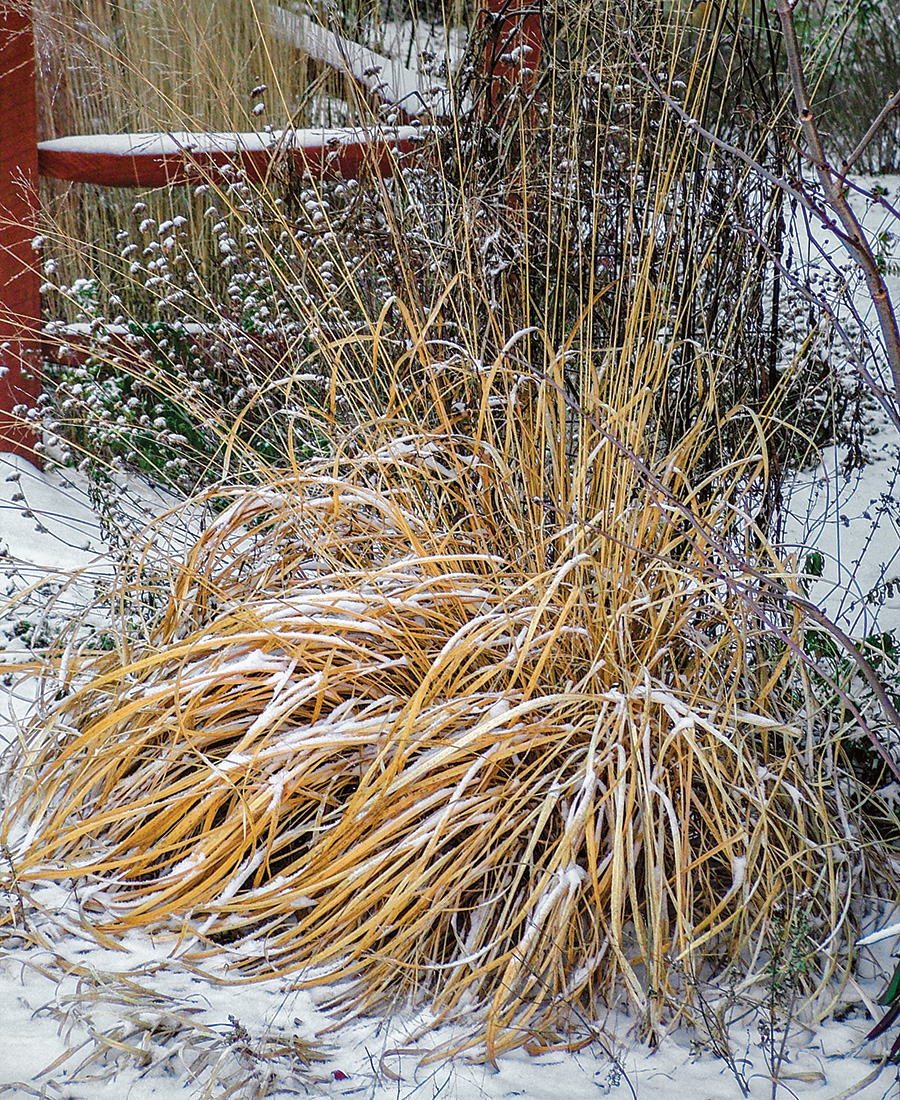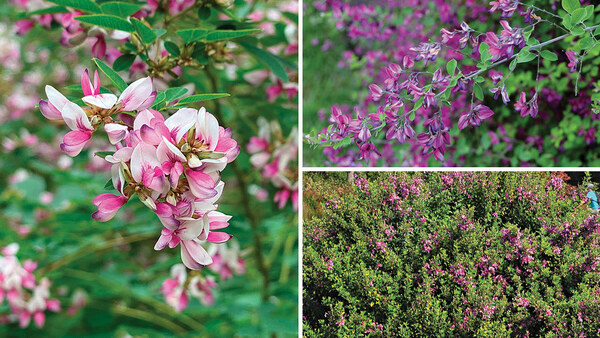
Naming issues
Research at Kew Gardens in England established that the different foliar traits of Molinia caerulea ssp. caerulea and M. caerulea ssp. arundinacea are cultural rather than genetic, which invalidates their distinction as subspecies. In the wild, the two subspecies grow together; however, the broad leaves and increased vigor of plants distinguished as M. caerulea ssp. arundinacea is due to unusually moist, fertile soils. Conversely, plants designated as M. caerulea ssp. caerulea are found growing on drier edges of the same bogs and moors. This information has not caught up with nomenclature, so the names reflect what’s commonly found in nurseries and garden centers.
Conditions
Molinia likes sunny open places with moist, well-drained soils. A preference for acidic to neutral pH doesn’t seem to matter much since it thrives in our alkaline soils. Consistent moisture is critical in hot, dry periods, as it is not drought tolerant—it grows naturally in moors, bogs, fens, and grasslands throughout Europe to western Siberia.
Hardiness
Molinia is quite cold hardy, long lived, adaptable to most garden conditions, and tolerant of partial shade. It is also slow to establish, needing up to three years to reach flowering age.

Flowers
Ranging from a few feet to a towering 8 feet tall, this grass packs a lot of oomph into its slender flower stems without feeling too hefty. Molinia blossoms fairly late for a cool-season grass, typically beginning in early summer, and it blooms best in areas with cool summer nights. The flowers get most of their color from the delicate purple anthers dangling from each tiny floret (photo right). Tall selections such as ‘Windspiel’ and ‘Skyracer’ are especially dramatic and kinetic in flower, and the diaphanous floral plumes are luminous when backlit by the sun.
Maintenance
Late fall to early winter cleanup is recommended; if you’re a neatnik, it’s essential. The colorful stems may remain erect for much of the winter but are as likely to flop, dislodge, and generally look disastrous. The generous height of the stems only compounds the mess.

Propagation
Divisions can be taken in early spring, but because of Molinia’s slow-growing nature, it is best to wait until your plants are several years old before attempting to divide them. Typically, older plants get a hole in their middle, indicating it’s time to divide.
Habit
Despite having a grand architectural presence, Molinia is simple in form—tufted mounds of basal leaves with slender upright to arching stems topped with airy clusters of tiny florets. The long, pointed leaf blades may be narrow with a vertical stance or broad with an arching habit.
Fall color
While leaves and flower stems are green in summer, they glow and smolder in autumnal hues of gold, orange, and red. The only nongreen form is ‘Variegata’, with its creamy yellow stripes.

Staying power
Molinia is unique among ornamental grasses because it is deciduous, which means it sheds its leaves in autumn. However, in my experience, the leaves don’t abscise as neatly as the term implies; rather, they gradually fall away as winter creeps on. Heavy snow will topple them and aid in breaking off the leaves and flower stems, causing a nasty jumble overnight. This is the best argument to be made for shearing them early. Having said that, I’ve observed fully upright (and attached) leaves and flower stems through nearly entire winters; M. caerulea ssp. caerulea types stand up to time and heavy snow better than the broad-leaved ones. The amber winter color is only a shade or two lighter than the bright autumnal show.
Richard Hawke is plant evaluation manager at the Chicago Botanic Garden in Glencoe, Illinois.
This article originally appeared as a sidebar in Get to Know Molinia from issue 184.

















Comments
Log in or create an account to post a comment.
Sign up Log in